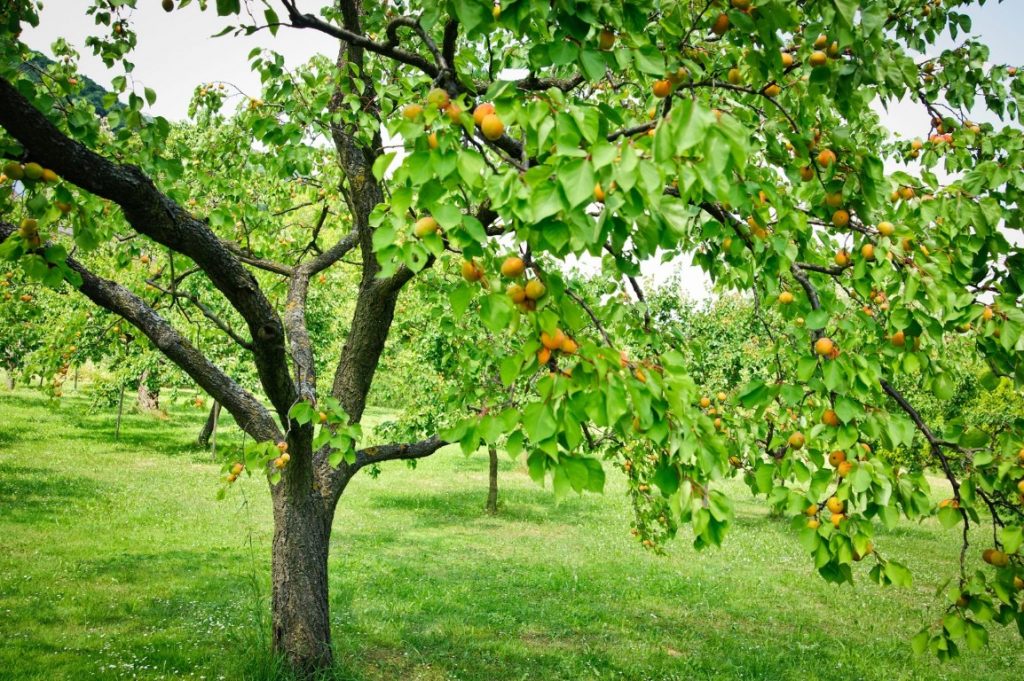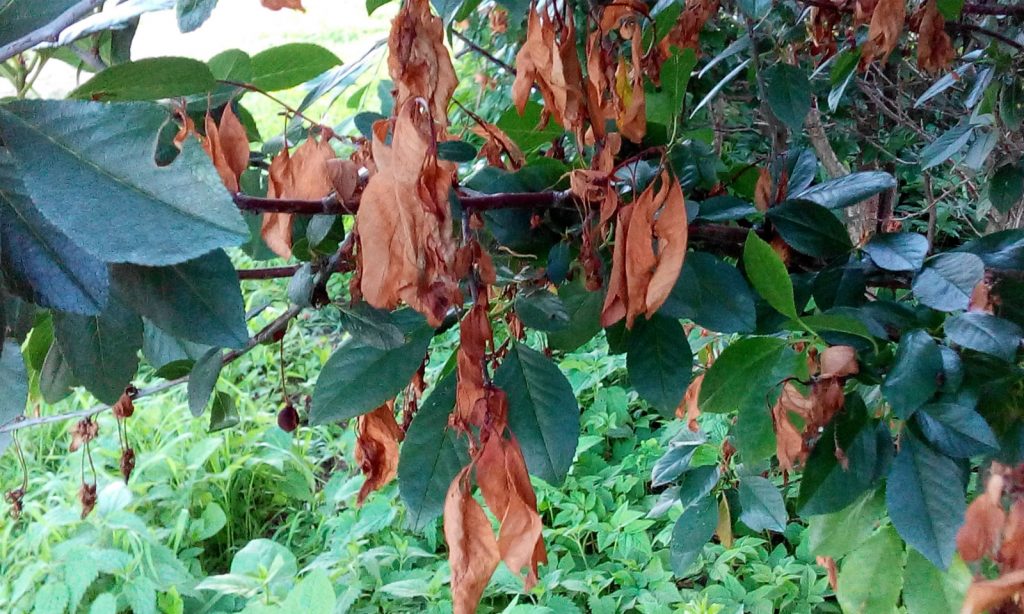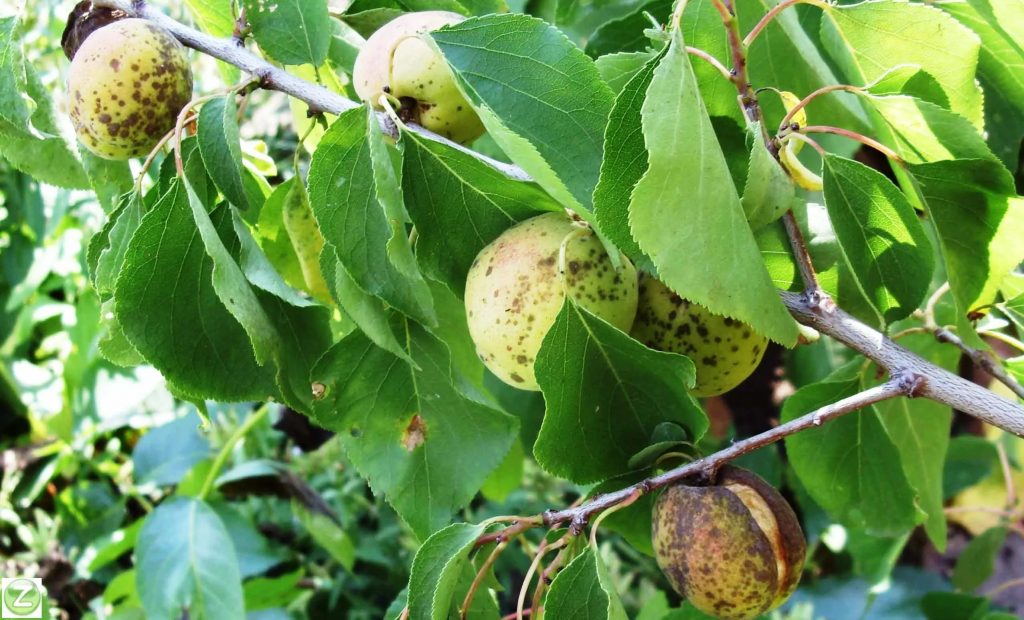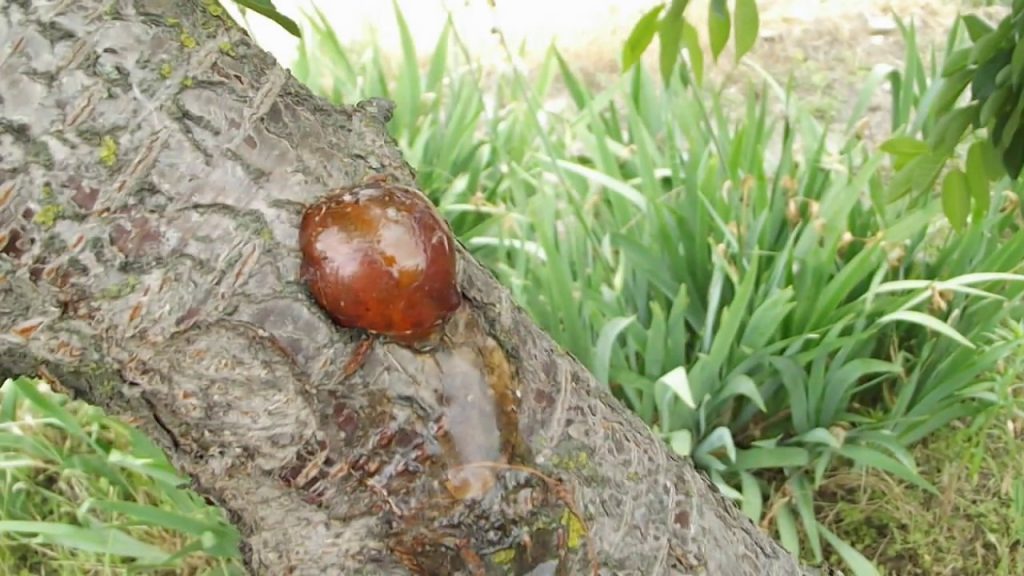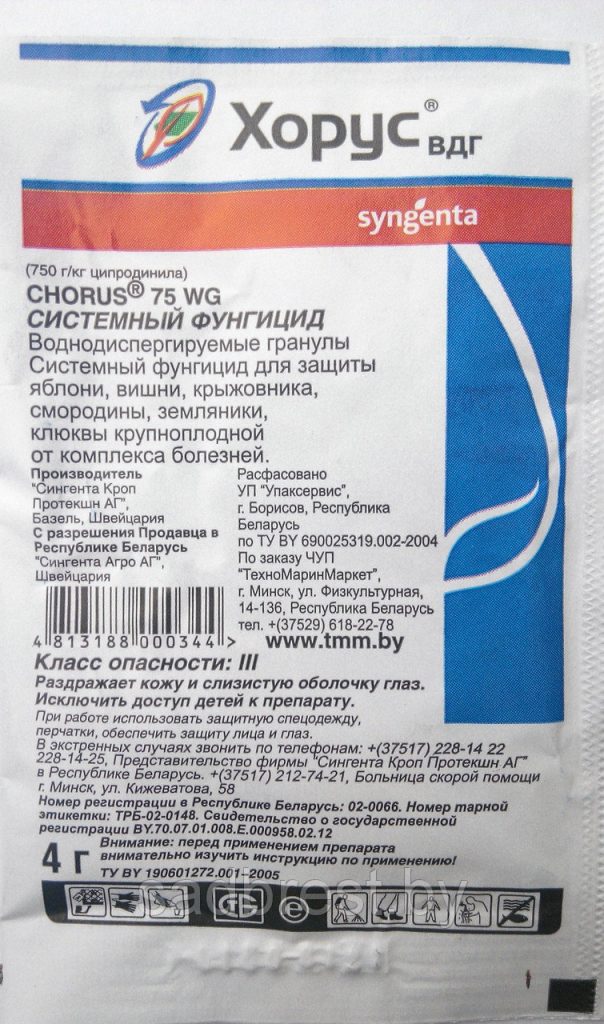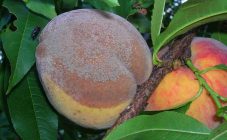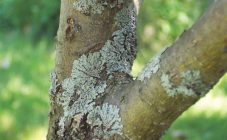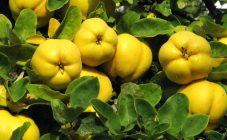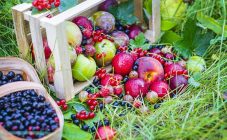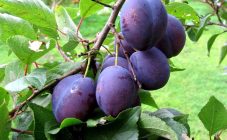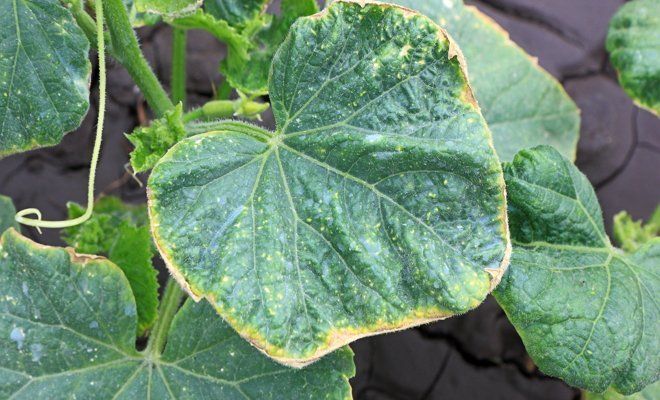Content:
Not all varieties of stone fruit crops are resistant to diseases and pests. Often there are situations when an apricot seedling does not bud, leaves or shoots dry up near the tree. It happens that fungal infections also affect ripe fruits, nullifying all the efforts of the gardener. In some cases, the tree can be saved, in others it dies completely. And it is possible to assess the prospects only with the correct analysis of the signs of pathology. And for this, the gardener must know the main diseases of the apricot (these are moniliosis, clotterosporia, powdery mildew, etc.) and the most effective methods of dealing with them.
Description of the signs of apricot diseases
First you need to figure out exactly how the symptoms of the disease look. For example, you should pay attention to the following signs:
- the apricot bark is cracking - this may indicate the presence of cytosporosis;
- resin on the trunk and branches, forming bizarrely frozen figures - this is gum flow, which can be associated with infectious diseases or wounds;
- brown spots on leaves and fruits can be a manifestation of various pathologies. If at the same time after some time the leaves are curled, this may indicate gnomoniosis;
- green leaves fall off, while sometimes there may be no other signs. Why apricot leaves wither and what to do in such a situation is a difficult question, since the reason may lie in both illness and lack of nutrients. For example, leaves fall in May with gnomoniosis, clasterosporium disease. Sometimes it is even worth contacting the laboratory for a more accurate analysis;
- the appearance of holes on apricot leaves can be caused by clasterosporiosis.
Signs of pathologies are black dots and bumps on the bark, the appearance of rot on the fruits. But some symptoms are not caused by diseases as such, but by the vital activity of pests. They are often the answer to the question of why the apricot tree dries. What to do in such a situation? First you need to identify the parasite, and then choose an insecticide. For example, if there are aphids on the trees, the leaves will definitely dry and curl, but the small dots on the fruits, surrounded by a bright rim, are scale insects. If you do not take any measures against them, the tree will wither.
- The apricot seedling does not bud for various reasons, including trauma to the roots during planting. But it is better to check the plant for various diseases.
- If the apricot has dried up, but sprout, this may indicate that the tree damaged by cytosporosis can still be saved. So, if the shoots come from the root, then by autumn it will be possible to choose the strongest shoot and transplant.
- If the apricot does not bloom after winter or dries up, if the leaves turn red and fall in June, all this can be a sign of illness and a signal that action must be taken immediately.
Apricot diseases
Diseases and treatment of apricot is a very important topic for gardeners. The main ailments of this culture are moniliosis, gnomoniosis, cytoporosis and gum flow. But other options cannot be ruled out. For example, it can be scab. It appears as olive brown spots on the underside of the leaf. These spots gradually increase in size, then the leaves roll up and fall off. This reflects badly on flower buds, there is a risk that the tree will not survive the winter.But even if it survives the cold, there will be problems with the harvest: the fruit will grow small and cracked. Other pathologies are no less dangerous.
Moniliosis
One of the most common diseases is apricot moniliosis. Another name for it is gray stone rot. Its symptoms appear in the spring. First, the flowers turn brown and dry, then the leaves and young fruit twigs. In the future, infection of the ovaries may occur. And pretty soon they dry up, and then the same thing happens with the shoots and even individual branches. That is why apricot leaves fall off in May. But it doesn't end there. The fruits also suffer from the disease: they shrivel, the pulp becomes brown, the skin begins to rot.
Various insects, including oriental moths and bud weevils, contribute to the spread of moniliosis. It is also transmitted by contact between a sick and healthy fetus. Therefore, to prevent disease, it is recommended to thin out the ovaries after shedding in June.
Primary infestation usually occurs during the flowering period. Precipitation is favorable for it - frequent rains, fogs, abundant dew. A cool spring with a long flowering period also encourages its spread.
The causative agent of moniliosis is the fungus monila cinezea bonord. It usually hibernates in the tissues of primary shoots, and wakes up in the spring. The methods of dealing with it are below.
Clasterosporium disease
Apricot clasterosporium is also called perforated spot. This is a fungal disease, and very common. Similar pathologies are found in all stone fruit plants. This disease is the answer to the question of why apricot leaves turn red in June. Although the disease affects all organs of the plant, including flowers and fruits, it is mainly the leaves that are affected. Reddish or purple spots appear on them, they can also be brown. But there are so many of them that from a distance the leaves can appear just red. The spots grow rather quickly, and soon holes are formed in their place, surrounded by a red border. These are important diagnostic features to distinguish spotting from other species. The incubation period of the disease is 10-15 days.
Cytosporosis
Cytosporosis of apricot is also an infectious pathology. It manifests itself as drying out of a tree, and primarily affects the bark. At first, only a small area becomes dry, then it begins to crack along the border with healthy tissues. The diseased bark resembles "goose bumps" in appearance; many dark small tubercles appear on it. Inside such formations there is a causative agent of the disease - a fungus (it can be of two types - Cytospora cineta or Cytospora leucostoma). Apricot leaves and flowers also dry up, which in such cases may not fall from the tree for a long time. With a severe course of the disease, the fungus can penetrate deeper, already into the subcortical layers. This is manifested by the outflow of gum, which leads to a violation of the conductivity of wood vessels.
The affected areas of the bark acquire a yellow tint. Gradually, the lesion spreads further and further, and as a result, the tree may die.
Gnomoniosis
Also called brown spot. It belongs to the number of infectious diseases, its causative agent is a marsupial mushroom. This pathology is typical for the southern regions. It mainly affects the leaves, much less often the fruits. The first symptoms become visible in the summer as early as early June. At first, subtle yellow spots appear on the leaves, which gradually increase, become brown, and then cover the entire leaf blade. Over time, in the center of the leaf, the spots dry out, and at the edges they become bright yellow, thickening is observed in this place.Then the leaves begin to curl and dry up, and most often the tree drops them.
If the fruit is damaged, then they crack, the pulp seems to dry out to the stone. Green fruits most often crumble, while ripe fruits remain on the tree, but change shape.
With gnomoniosis, apricot tends to shed its leaves as soon as possible, about 2 months before the natural start of leaf fall. This leads to a decrease in the growth of shoots, and in difficult situations, the whole tree can die, especially in a frosty winter.
Gum therapy
Apricot gum removal (its second name is gommosis) is most often not considered as an independent phenomenon, but accompanies other diseases. For example, it occurs with cytoporosis, clasterosporium disease, bacterial lesions, moniliosis, when the integrity of the tissues is disturbed, and the causative agents of the listed infections enter the resulting wounds. This is what causes the gum to flow. It is essentially a resin that resembles amber. An accumulation of yellowish sticky substance can be seen just at the site of the lesion, in cracks in the bark.
The development of this pathology is facilitated by factors such as growing on heavy soils with a high level of acidity, as well as a high level of moisture and lack of nutrients.
How to revive an apricot
With moniliosis, damaged shoots and fruits must be destroyed. After that, it is necessary to carry out treatment with Horus or Topaz 100 EC.
It is advisable to treat cytosporosis only in the early stages. If the spores of the fungus have already penetrated deeply, the tree cannot be saved. The diseased bark is removed mechanically by cutting it off with a knife. The resulting wound must be disinfected, for which a 2% solution of copper sulfate, nigrol putty is used. If a large area is cut off, you need to additionally bandage it. All affected leaves, fruits, twigs should be removed so that the disease does not spread further.
If gum flow has begun in an apricot, what to do — a question relevant to any gardener. They begin to resuscitate the tree after the sap flow ends. The wounds are cleaned with a sharp garden knife until healthy patches appear behind them. Then they are disinfected with a 1% solution of copper sulfate and covered with a mixture of sifted ash and nigrol (in a ratio of 3: 7).
To combat gnomoniosis, you need to carry out anti-aging pruning of weakened trees. After that, the wounds should definitely be disinfected. Trees are sprayed with Bordeaux liquid (1% solution), zineb (0.4%) or captan (0.5%) until the end of May. During the month, 2 more sprays are carried out with a break of 2 weeks. How to spray apricots after flowering? You can use the same chemicals as for the first spring treatments. The next one is done after harvesting the fruits.
For clasterosporium disease, treatment with a drug such as chorus is carried out during the growing season. Before bud break, it is advisable to spray the tree with Bordeaux liquid.
The main way to fight scab is to treat apricots during flowering with one of the popular fungicides, for example, carpene 65 WP.
How to deal with aphids on apricot? A biological method like attracting ladybirds does not harm nature, but it is not effective enough if the infection has already begun. Therefore, it is recommended to use insecticides based on pyrethrins or vegetable oils (for example, Vitax organic). Aktofit and fitoverm cannot boast of such a degree of environmental safety, but they are generally not toxic to humans.
Insecticides are also used to treat scale insects. The most effective are kinmix and aliot.
Preventive measures
The prevention of moniliosis is the already mentioned thinning of the ovaries after shedding in June. It is important to dig up the trunks in a timely manner and apply mineral and organic fertilizers. Be sure to carry out the so-called eradicating spraying, for which they take a 1% solution of DNOC. This is done about 2-3 weeks before the buds open. It is recommended to spray the tree with a 2-3% Bordeaux liquid in the pink bud phase, and after flowering, carry out another treatment, but with a less concentrated 1% solution.
Prevention of cytosporosis is reduced to the fact that you need to check for the presence of sunburn or frostbites on the bark. Such affected areas must be disinfected without fail. It should also be remembered that cytoporosis, like other stone fruit diseases, affects primarily weakened trees. Therefore, apricots need top dressing, especially if they grow on poor soils. Potash fertilizers are usually used in such cases. For preventive purposes, preparations are also introduced into the soil that increase the resistance of trees to diseases, for example, novosil. It is recommended to treat trees with antifungal agents, even if there are no signs of damage.
Prevention of gum flow is timely pruning of trees and prevention of injury to the bark.
To prevent apricot pests from appearing in the garden, you need to lure insects that feed on aphids. These are, for example, ladybugs, who are attracted to the garden by the smell of herbs like parsley.
Frequently asked questions about apricot diseases
Perhaps the most common questions among gardeners are why the apricot died and how to revive the apricot seedling.
In the first case, of course, nothing can be done, since the gardener should have paid more attention to the tree earlier. For example, pay attention to the fact that apricot leaves green leaves. This tree can die from all the diseases described above if they were not treated. In addition, this is a southern plant, and if the gardener got a zoned variety, then the seedling must be fed and sprayed, and not only for the prevention of diseases. You should also use growth promoters (such as epin) to help you cope with even adverse conditions.
How to revive an apricot seedling? This can only be done if the disease has not gone too far. And first of all, you need to get rid of the affected branches and leaves. If the seedling begins to fade before planting, then it can be reanimated with a solution of camphor alcohol. Take 15 drops of the active ingredient in 0.5 liters of water. This solution is used to moisten the roots of the seedling and its trunk. It is best to do this with a soft brush.
Not all apricot varieties are resistant to diseases and pests. But proper care, competent feeding and timely preventive measures can prevent their occurrence.
